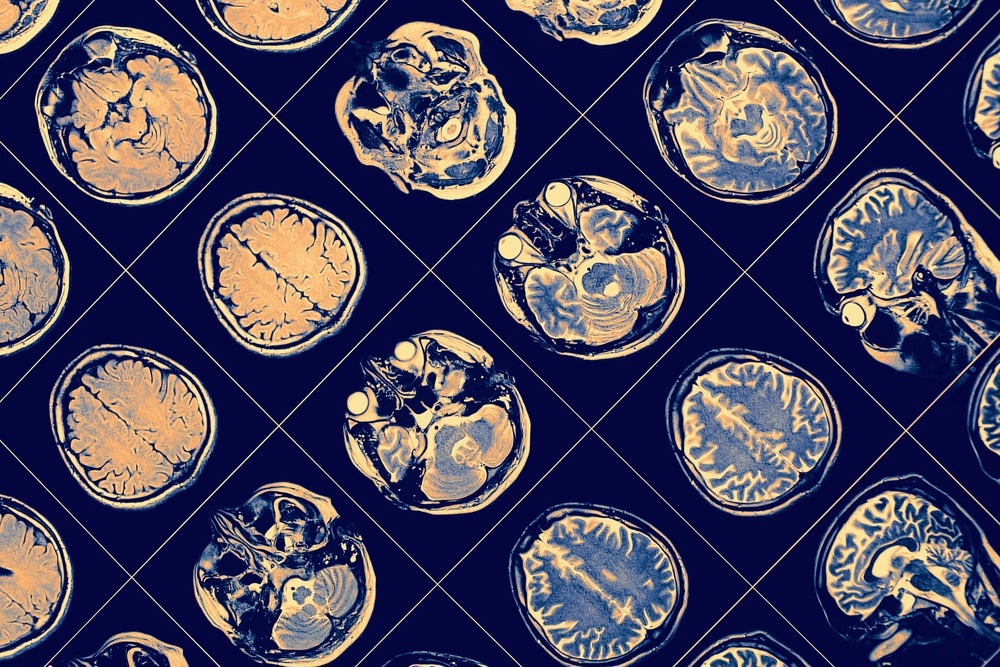Scientists from the University of Wisconsin–Madison have pinpointed a crucial protein associated with the formation of a specific type of brain cell implicated in conditions such as Alzheimer’s and Parkinson’s diseases. Leveraging this discovery, they have successfully cultivated neurons from stem cells, marking a groundbreaking achievement.

Image Credit: sfam_photo/Shutterstock.com
The newly generated norepinephrine neurons, derived from stem cells, mirror those found in a region of the human brain known as the locus coeruleus. These neurons hold promise for advancing research into various psychiatric and neurodegenerative disorders, offering a potential avenue for the development of innovative treatment approaches.
The study, led by Yunlong Tao, a former Research Professor at UW–Madison’s Waisman Center and currently affiliated with Nanjing University in China, along with Su-Chun Zhang, a Professor of neuroscience and neurology at UW–Madison, was recently published in the journal Nature Biotechnology.
The locus coeruleus-based norepinephrine neurons play a pivotal role in regulating essential physiological functions such as heartbeat, blood pressure, arousal, memory, attention, and the “fight or flight” response. With approximately 50,000 LC-NE neurons situated in the hindbrain, these cells extend their reach throughout the entire brain and spinal cord.
The norepinephrine neurons in the locus coeruleus are essential for our life. We call it the life center. Without these nerve cells, we would probably be extinct from Earth."
Su-Chun Zhang, Professor, Neuroscience and Neurology, University of Wisconsin-Madison
Though the specific role remains elusive, these neurons are implicated in a range of neurodegenerative and neuropsychiatric disorders. In conditions like Alzheimer's and Parkinson’s, the degeneration of these neurons often initiates at an early stage, sometimes preceding dysfunction in other brain regions by years.
People have noticed this for a long time, but they don’t know what the function of the locus coeruleus is in this process. And partly because we don’t have a good model to mimic the human LC-NE neurons."
Yunlong Tao, Study First Author and Investigator, Nanjing University
Earlier efforts to generate these neurons from human stem cells relied on a protocol derived from the development of LC-NE neurons in mouse models. Over a two-year period, Tao investigated the reasons behind the failures of these attempts and delved into the distinctions in the development of neurons from stem cells in humans.
In the current study, he pinpointed ACTIVIN-A, a protein within the family of growth factors, as a crucial regulator of neurogenesis in human NE neurons.
We have some new understanding about locus coeruleus development. That’s the major finding in this paper, and based on that finding, we are able to generate locus coeruleus norepinephrine neurons."
Yunlong Tao, Study First Author and Investigator, Nanjing University
To generate LC-NE neurons, the scientists transformed human pluripotent stem cells into hindbrain cells. Utilizing ACTIVIN-A and a series of additional signals, they directed the cellular development toward becoming LC-NE neurons.
Upon conversion, these cells exhibited typical traits of functional LC-NE neurons found in the human brain, including the release of the neurotransmitter norepinephrine. They also displayed axonal arborization, the extension of long, branching arms facilitating connections between brain cells, and responded to the presence of carbon dioxide, a crucial factor in breathing control.
These newly created cells hold the potential to serve as models for human diseases, enabling researchers to screen drugs for potential treatments and address questions surrounding the early demise of cells in the locus coeruleus during neurodegenerative diseases.
Zhang stated, “If this is somewhat causative, then we could potentially do something to prevent or delay the neurodegeneration process.”
In the future, the LC-NE cells could potentially function as a form of stem-cell therapy.
Zhang added, “The application of these cells is quite broad in its significance.”
Subsequently, the researchers aim to investigate the intricate mechanisms by which ACTIVIN-A governs the development of LC-NE neurons. Additionally, the team will employ these cells for the translational aspects of drug screening and disease modeling.
Source:
Journal reference:
Tao, Y., et al. (2023) Generation of locus coeruleus norepinephrine neurons from human pluripotent stem cells. Nature Biotechnology. doi.org/10.1038/s41587-023-01977-4.